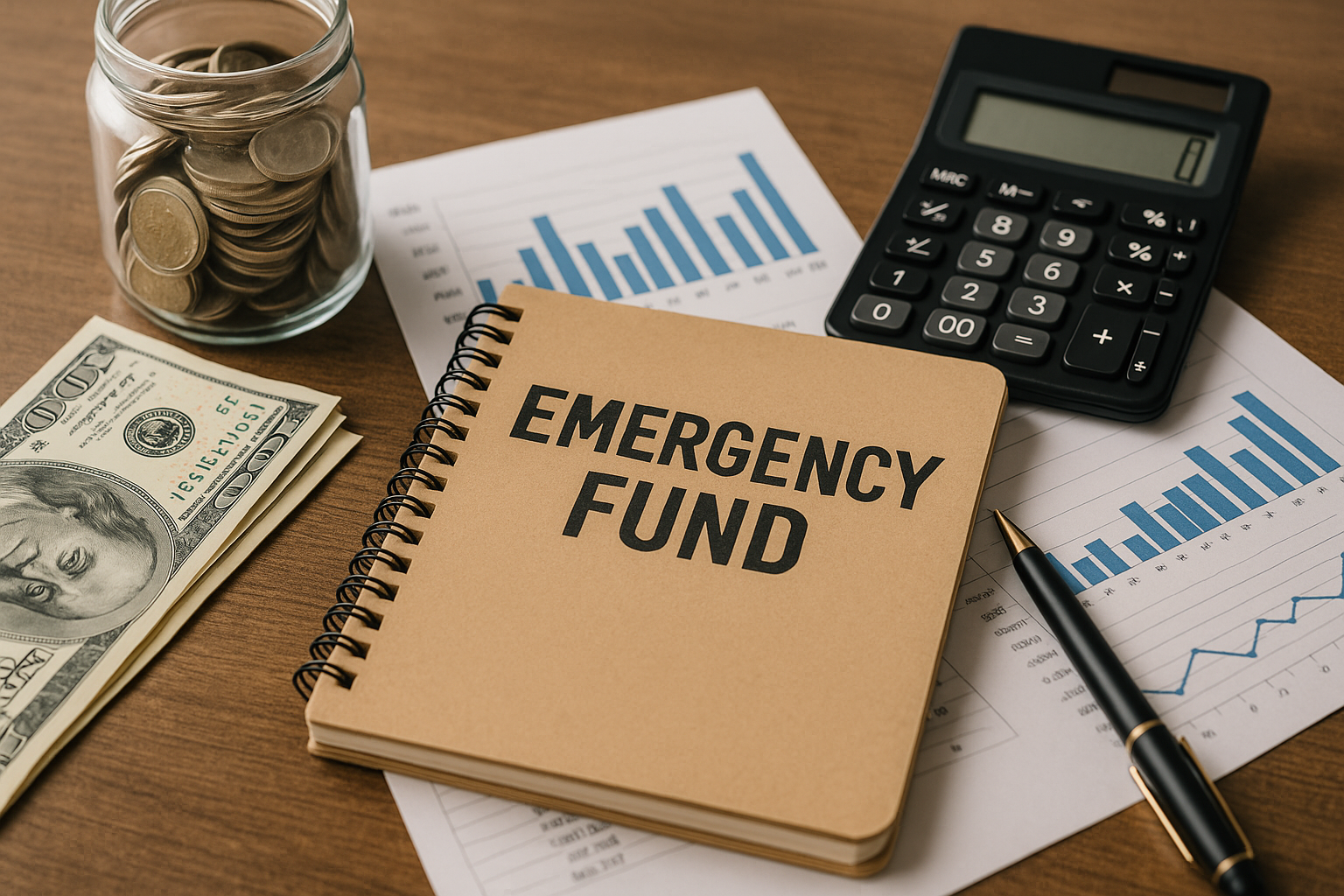Peace of mind starts with preparation
What would happen if you lost your job tomorrow? Or had an unexpected medical bill, car repair, or appliance breakdown? If your answer involves pulling out a credit card, borrowing money, or “figuring it out later,” it’s time to build an emergency fund — your personal financial safety net.
This guide will show you exactly how to create an emergency fund, step by step, even if you live on a tight budget. No jargon, no pressure — just practical steps toward real financial security.
What Is an Emergency Fund?
An emergency fund is money you set aside for life’s unexpected moments — things that are necessary, urgent, and unplanned. It’s not for shopping sprees, vacations, or upgrading your phone.
It’s a buffer that helps you avoid going into debt when something unexpected happens.
Why an Emergency Fund Is Non-Negotiable
✅ It protects your financial stability
Instead of relying on high-interest credit cards or loans, you can cover emergencies without going into panic mode.
✅ It reduces stress
Knowing you have backup money gives you peace of mind and helps you sleep better at night.
✅ It gives you freedom
You can walk away from toxic jobs or situations when you’re not desperate for your next paycheck.
How Much Should You Save?
The common rule of thumb is:
- 3 to 6 months of essential living expenses if you have a stable job
- 6 to 12 months if your income is variable, freelance, or uncertain
How to calculate it:
Add up your bare minimum monthly costs, like:
- Rent or mortgage
- Utilities and groceries
- Transportation
- Insurance
- Minimum debt payments
- Medical and childcare expenses
Example: If you need $2,000/month to cover basics, your emergency fund should be $6,000 to $12,000.
Step-by-Step: How to Build an Emergency Fund
1. Set your target amount
Know your goal from the start — but don’t get overwhelmed by the total.
Break it down into smaller, reachable milestones:
- First $500
- Then $1,000
- Then one month of expenses
- And so on
2. Open a separate savings account
Keep your emergency fund out of sight and out of mind.
- Use a high-yield savings account at an online bank
- Avoid mixing it with your checking account
- Don’t connect it to your debit card
3. Start small and stay consistent
Even saving $10 or $25 a week makes a difference. Don’t wait to have “extra” — start now.
This is about building the habit first, not the amount.
4. Automate your savings
Set up a recurring transfer to your emergency fund the day you get paid. That way, it becomes a non-negotiable part of your routine — like rent or groceries.
5. Track progress visually
Seeing your fund grow boosts motivation.
- Use budgeting apps like YNAB, Mint, or Qapital
- Create a progress tracker in a spreadsheet
- Celebrate every milestone you hit
6. Only use it for real emergencies
You know what’s not an emergency?
🛍 A flash sale
🏝️ A vacation deal
📱 A new phone launch
Real emergencies include:
- Job loss
- Emergency medical expenses
- Urgent home or car repairs
- Unexpected essential travel
Be strict about what qualifies.
Where to Keep Your Emergency Fund
Your fund should be:
- Safe (low risk)
- Liquid (easy to access quickly)
- Earning some interest (to beat inflation)
Top options:
- High-yield savings accounts (4%+ APY)
- Money market accounts
- Short-term CDs with no early withdrawal penalties
Avoid: the stock market, crypto, or any account with withdrawal delays or volatility.
Ways to Build It Faster
- Save your tax refund or work bonus
- Sell unused stuff online
- Cut back on non-essentials for a month and stash the difference
- Pick up a side hustle and put 100% toward your fund
Every dollar helps — it’s not about perfection.
How to Protect Your Emergency Fund
- Don’t connect it to your debit or payment apps
- Avoid checking the balance too often
- Refill it immediately after using it
- Reassess once a year as your life and expenses change
What Happens After You Reach Your Goal?
Once your emergency fund is fully funded, you can:
- Start investing for long-term goals
- Build sinking funds for planned expenses (car, vacations, gifts)
- Increase your emergency fund if your lifestyle or dependents change
The fund gives you a foundation to grow from, not just survive on.
Final Thoughts: This Is Your Financial Peace Plan
Life throws curveballs. That’s a guarantee. What isn’t guaranteed is how prepared you’ll be to handle them.
Your emergency fund is the difference between panic and peace, between debt and independence.
Start small. Be patient. And stay committed — your future self will thank you.
